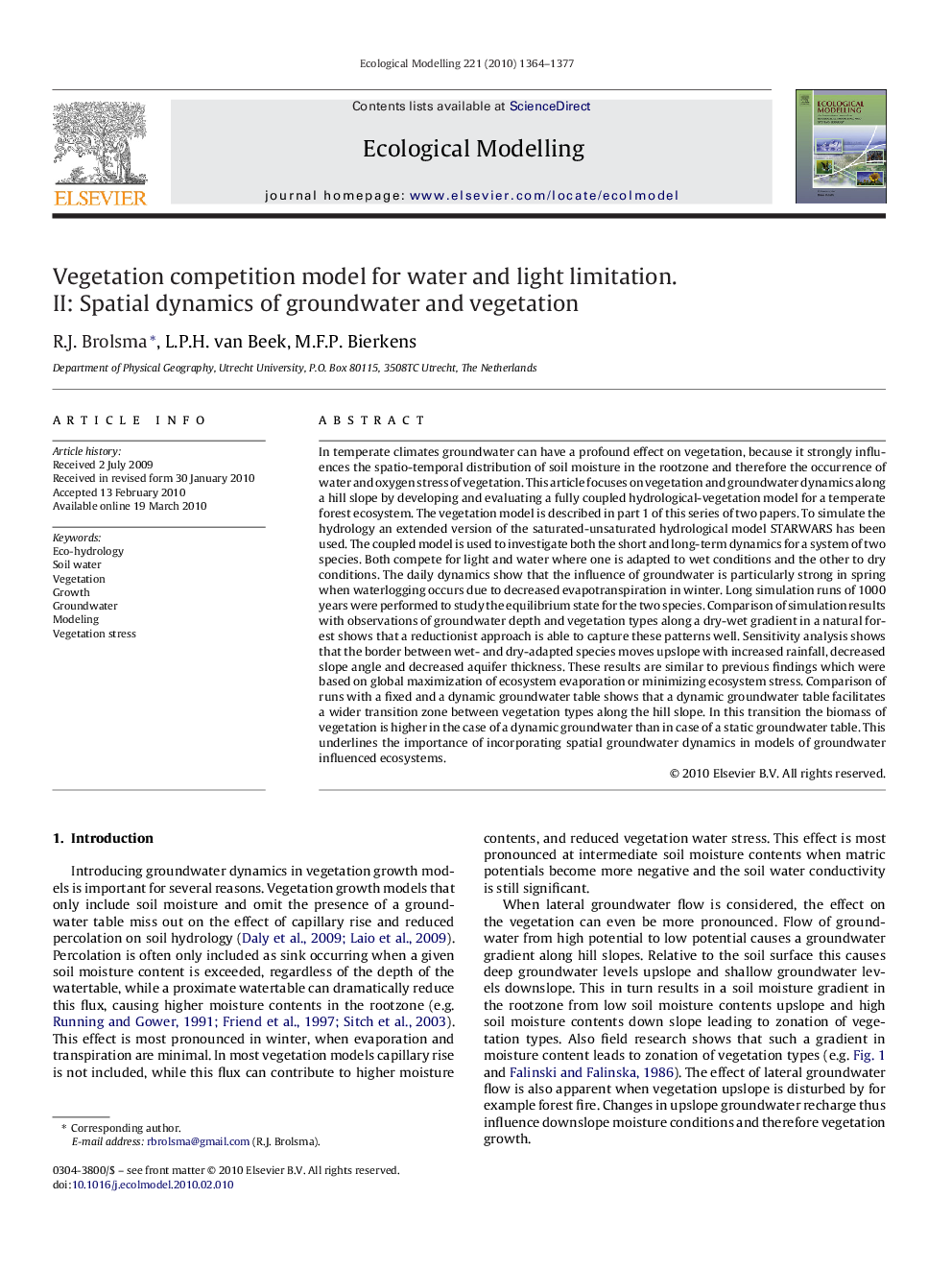| Article ID | Journal | Published Year | Pages | File Type |
|---|---|---|---|---|
| 4377324 | Ecological Modelling | 2010 | 14 Pages |
In temperate climates groundwater can have a profound effect on vegetation, because it strongly influences the spatio-temporal distribution of soil moisture in the rootzone and therefore the occurrence of water and oxygen stress of vegetation. This article focuses on vegetation and groundwater dynamics along a hill slope by developing and evaluating a fully coupled hydrological-vegetation model for a temperate forest ecosystem. The vegetation model is described in part 1 of this series of two papers. To simulate the hydrology an extended version of the saturated-unsaturated hydrological model STARWARS has been used. The coupled model is used to investigate both the short and long-term dynamics for a system of two species. Both compete for light and water where one is adapted to wet conditions and the other to dry conditions. The daily dynamics show that the influence of groundwater is particularly strong in spring when waterlogging occurs due to decreased evapotranspiration in winter. Long simulation runs of 1000 years were performed to study the equilibrium state for the two species. Comparison of simulation results with observations of groundwater depth and vegetation types along a dry-wet gradient in a natural forest shows that a reductionist approach is able to capture these patterns well. Sensitivity analysis shows that the border between wet- and dry-adapted species moves upslope with increased rainfall, decreased slope angle and decreased aquifer thickness. These results are similar to previous findings which were based on global maximization of ecosystem evaporation or minimizing ecosystem stress. Comparison of runs with a fixed and a dynamic groundwater table shows that a dynamic groundwater table facilitates a wider transition zone between vegetation types along the hill slope. In this transition the biomass of vegetation is higher in the case of a dynamic groundwater than in case of a static groundwater table. This underlines the importance of incorporating spatial groundwater dynamics in models of groundwater influenced ecosystems.
